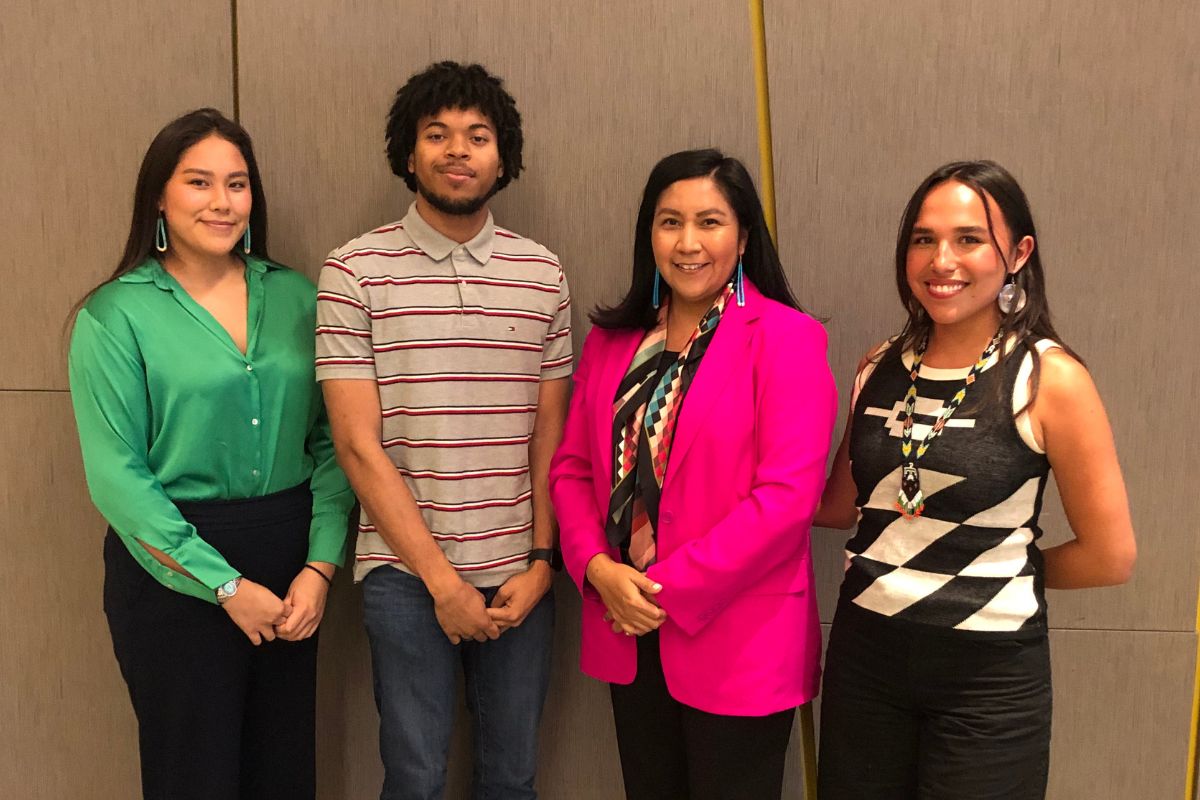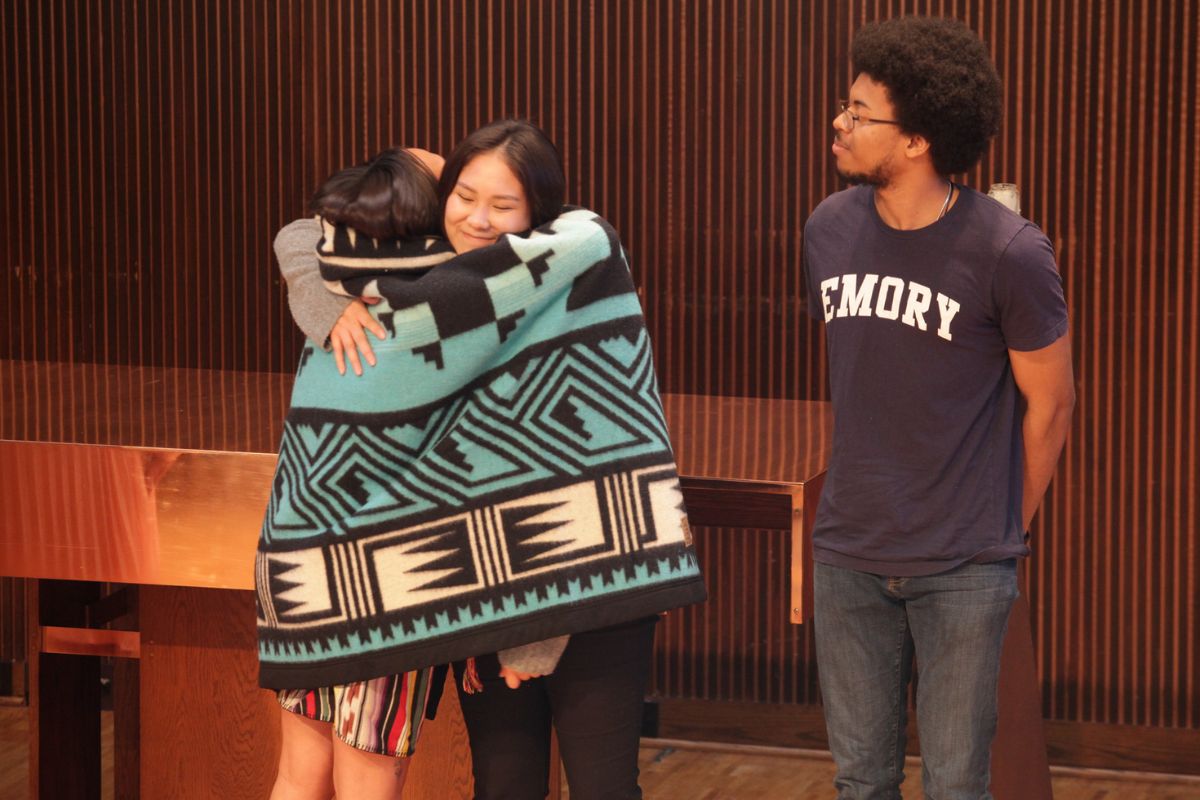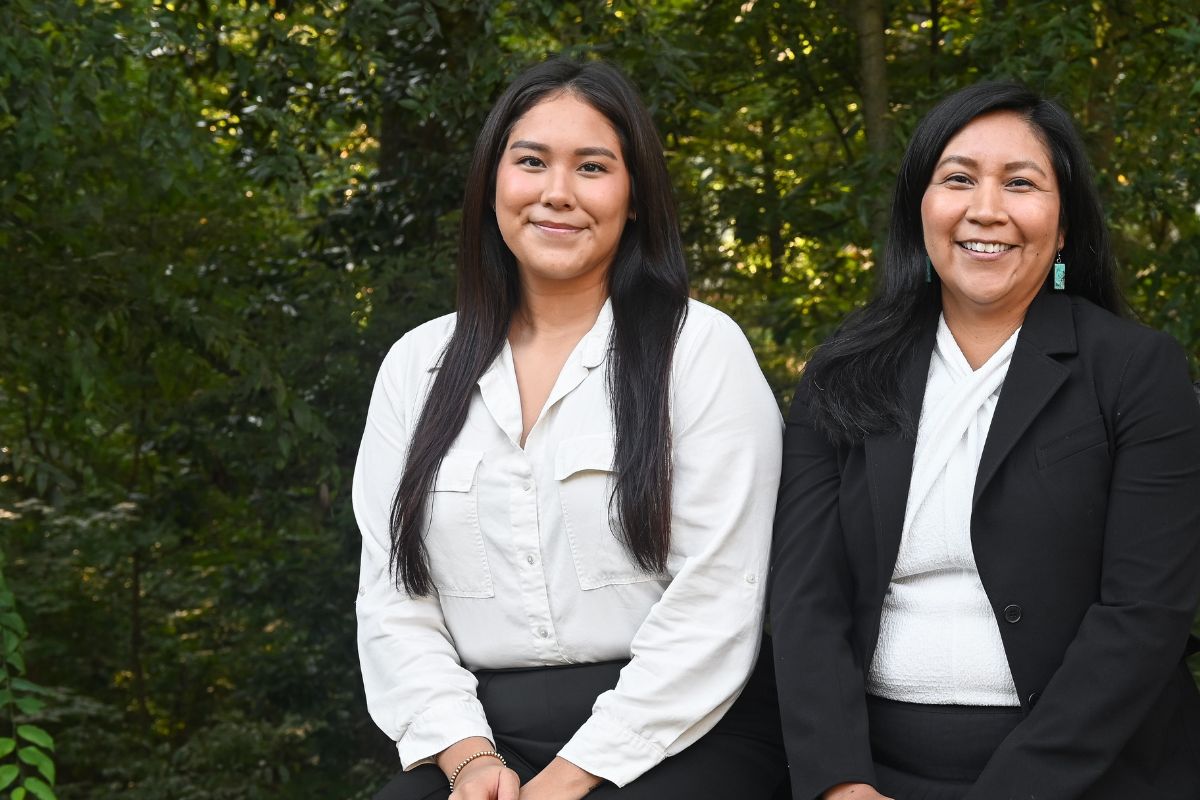A month before applying to Emory University, Kennedy Pete had never heard of the school.
Now she’s a senior in Emory College of Arts and Sciences, double majoring in human health and sociology and eyeing a career in the maternal and child public health field, likely paired with a law degree.
But none of the experiences Pete has had at Emory — or the work she’s done to help build an on-campus community for Native students — would have come to fruition without the College Horizons program, which she attended in high school.
Acquiring the confidence to apply
From Oak Springs, Arizona, but raised in Gaithersburg, Maryland, Pete is Diné (Navajo). She is Tódík’ózhí (Salt Water Clan), born for Díbéłzhíní (Black Sheep Clan). While she attended Holton-Arms School in Bethesda, Maryland, she was the only Native American student. As a rising high school junior, Pete attended the College Horizons program at Rochester University in June 2018.
The gathering is a pre-college program for Native American high school students that helps them through the college selection and admissions process. Activities focus on college-preparatory skills such as building resumes, writing, networking and conducting mock interviews, along with making students aware of schools that could be a good fit or have an existing, supportive Native community. Pete also remembers it as one of the first times she’d been able to connect with Native students her own age.
“As I went through this program, they really built my confidence up and allowed me to explore and reflect on the skills I can bring to the forefront of my application,” Pete says.
Then, senior year, Pete’s college counselor suggested that Emory might be a good fit thanks to her interest in the public health and health care fields.
“My counselor gave me the rundown of the programs and Rollins [School of Public Health], and once I saw the campus, I fell in love with that and was drawn to the decorated faculty here, too,” Pete says. “I felt like there were a lot of resources for all the different careers in public health, even the ones I hadn’t realized existed. Emory moved its way to the top very quickly.”
The confidence she gained during the College Horizons program has continued to pay dividends as Pete has found her path at Emory.

A group of students involved with Emory’s Native Student Association attended a panel discussion at the National Center for Civil and Human Rights in November 2023. Panelists included (l-r) Kennedy Pete, Tre’ Harp and Sierra Talavera Brown, with Beth Michel (second from the right) also attending.
Gaining hands-on experience
While she entered Emory already drawn to health care fields, Pete became increasingly interested in maternal and child health after interning at the Indian Health Service the summer between her sophomore and junior years. There, she worked on a Patient Journey Mapping project, primarily analyzing the experiences of women who suffered from postpartum hemorrhage over the previous five years to better understand how factors in their journey of care may have contributed to their health outcomes.
Pete also researched the state of maternal health in Native American/Alaska Native communities to inform the basis of the mapping project.
“After working so intensely on this project and learning more about the disproportionate rates of maternal and infant mortality that Native American and Alaskan Native communities experience, I felt that this area of public health was something I was incredibly passionate about and wanted to learn as much I could to continue to work to improve health outcomes in Native communities,” she says.
“I also found myself seeking to identify and understand the systemic barriers that may contribute to these adverse health outcomes, as well as how we can improve systems of care in a way that respects the diversity of tribal communities and the unique challenges each of them face.”
Her burgeoning interest in law school came later.
“My involvement with the National Congress of American Indians as a co-vice president of their Youth Commission has opened my eyes to work in the advocacy and government policy realm regarding issues facing Indian Country, especially issues that heavily impact Native youth,” Pete says. Specifically, Pete’s interests are in child welfare, mental health, educational preparation, substance use disorders, and environment and resource protection.
Thanks to this experience, Pete has learned more about working in government and congressional spaces and has seen how a background in law and policy could be useful for work protecting the rights and sovereignty of tribal nations.

Kennedy Pete and Sierra Talavera-Brown 23C at the Celebration of Native & Indigenous Graduates in May 2023.
Building community with Native students
In the time between Pete’s first and last years at Emory, she’s been an integral part of building a more visible — and vocal — Native community here.
“When I first got to Emory, I was the only Native student I knew of in my year,” she remembers. “I felt hesitant and I didn’t know where to look. There wasn’t a community yet, but Beth Michel reached out to me about a group of Native students trying to develop this hub for Native and allied students, faculty, staff and alumni, and I jumped on that.”
Michel [12PH (Tohono O’odham)] serves as senior associate director at Emory’s newly established Center for Native American and Indigenous Studies. “I met Kennedy by Zoom in August 2020. I was excited to learn that Kennedy chose Emory,” Michel says. “As the co-president for the Native American Student Association (NASA) on campus, her contributions will continue to have a positive impact for future classes.”
Pete’s work with NASA and the Native American and Indigenous Studies Initiative (NAISI) is focused on creating a supportive and inclusive atmosphere for Indigenous students — a nuanced endeavor.
One aspect of community is providing an environment where students can easily find resources and solidarity. Regarding NASA, Pete says, “For students in the group, we want to give them an environment where they can come to us as resources who have been at Emory for three or four years. … I don’t want any other Native students to feel like they’re the only ones and to have that affect their experience.”
In addition to working on logistics and resources, opportunities to relax and bond are priceless, too.
“Having fun events — such as attending Georgia Swarm games to cheer on the Thompson brothers, accomplished Native athletes — for us to bond and talk about our experiences and successes, and celebrating that among ourselves and with faculty who are involved in supporting us, is vital,” she says.
Meanwhile, NAISI focuses more on long-term goals. That committee of faculty, staff and students works to plan larger events, develop resources and put more emphasis on hiring Native professors and creating more connections with Native organizations, including other schools and nonprofits.
“We are looking ahead to the Native community at Emory in five, 10 or 15 years, and we want [the community] to be growing,” Pete says.
Michel credits Pete as an integral part of moving that vision forward.
“I am so proud of Kennedy and it's been an honor to serve as one of her mentors during her time at Emory College. She has distinguished herself not only as a campus leader but a good relative,” Michel says.
“In our Tribal communities, being a good relative is providing support across generations to help others understand our sovereign nations and our concerns,” Michel adds. “She walks in spaces that Emory likely has never had representation in before, like the White House Tribal Youth Forum. She is carrying forward the vision that began with Klamath Henry 19C. The wealth of knowledge she's brought to our campus continues to transform spaces to ensure more Native and Indigenous students can thrive at Emory.”

Kennedy Pete (L) and Beth Michel [12PH (Tohono O’odham)], senior associate director at Emory’s Center for Native American and Indigenous Studies.
Working with the university
Emory’s Muscogee teach-ins are one such longer-term goal and important event. Pete has served the Muscogee community during the 2022 and 2023 teach-ins as a volunteer and attendee.
“Attending the first Muscogee Teach-In in 2022 was one of the most moving moments I have experienced at Emory, especially being a Native student who had not had similar events like this held on campus previously,” Pete says. She points to the broad attendance — including non-Native Emory students, faculty and staff — as part of that impact.
The teach-ins began following Emory’s 2021 Land Acknowledgment Statement, which recognized the Muscogee (Creek) people “who lived, worked, produced knowledge on, and nurtured the land where Emory’s Oxford and Atlanta campuses are now located.”
“Being able to learn from Muscogee tribal leaders about their histories and teachings on their traditional homelands represented more than just a moment of community building at a singular point in time,” Pete says, “but rather a promise and commitment by Emory as an institution to continue to create an environment where Native voices are heard, prioritized and a focal point of future community building.”
Emory is already building on that promise with the Center for Native American and Indigenous Studies, launched in fall 2023. The center is supported by a $2.4 million Mellon Foundation grant awarded to Emory University and the College of the Muscogee Nation.
As part of NASA, Pete was involved with the center’s launch, including opportunities to listen to faculty candidates’ presentations, ask questions and provide feedback.
These chances to give feedback throughout the process are “incredibly important to making sure that the Native student body’s voice is taken into consideration when these candidates will be working in the area of Indigenous Studies and have an immense impact on how Native students are represented and supported,” she says.
As Pete explains, these events and initiatives aren’t exclusive to Native or Indigenous students and faculty. They’re relevant to all corners of the Emory community.
“To any student at Emory, professors and faculty, I want them to know that everyone is welcome at these events and [can access] the resources we provide on our website or speakers that we host,” Pete says, asking community members to spread the word about events, even if they can’t attend.
“You don’t need to know everything. You can come as you are, and being there is a sign of support.”
Photos courtesy Kennedy Pete and Beth Michel.

